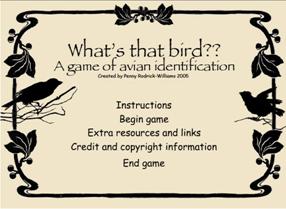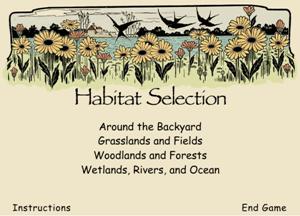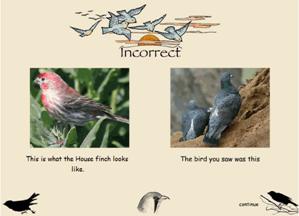Working with PRESENT staff, faculty members have created interactive, web-based “games” that test a student’s understanding of course material and provide an environment for problem-based learning.
Ready, set, concentrate!
With course objectives that include understanding epidemiology and gaining familiarity with the organisms that cause foodborne disease, one faculty member’s collaboration with PRESENT has allowed her to interact with her students and reach her educational goals in unique ways.

Dr. Kali Kniel
Dr. Kali Kniel, Assistant Professor, Department of Animal and Food Sciences, and Becky Kinney, PRESENT’s multimedia developer, created a simulation of an outbreak investigation for her Foodborne Diseases course. The web-based program is modeled on the classic board game “Concentration,” but computer technology has allowed for unique and useful variations.
“The matching part of the game provides a review of the basic concepts,” notes Professor Kniel, “but for each correctly matched pair, there is a two-part reward. The first is that the player is given the opportunity to read a clue provided on an in-game notebook. The second is, when the matched cards are removed, part of a picture on the board is revealed and this picture is an additional clue.”
As this is a simulation of a real-world situation, in which time-sensitive evidence may quickly be rendered unusable or individuals involved in the case become unavailable, so the player must also watch the clock.
“An aspect that adds to the challenge of the game is that question cards fade away as time passes and, once one disappears, that clue is no longer available.” Although these pieces of missed information cannot be retrieved once they are gone, observant students will often be able to make an educated guess as to the outbreak’s origins based on other evidence they have collected. In one particular instance, the game’s realism made for a situation that even Kniel had not foreseen: While working in teams, several students came to the conclusion that a specific outbreak had two possible causes.
“They were forced to look up more information and make their choice. The game is based on an outbreak from 1998, so they learned from that as well.” The simulation thus surpassed its intended uses and allowed for a dynamic instance of problem-based learning and research application.
“I highly recommend using this type of technology in class and cooperating with PRESENT. The staff members are valuable resources, and I hope that educators will continue to work with them to design exciting teaching tools like this game.”
You can view Dr. Kniel’s work at the multi-stage outbreak web site.
Heading out for some bird watching
 Penny Rodrick-Williams, supplemental faculty, Entomology and Wildlife Ecology, worked closely with PRESENT staff to develop a wildlife identification game. Her bird identification game presents students with a number of interactive questions regarding various species indigenous to Delaware and the surrounding area. “Whether the students are wildlife majors or English majors, it isn't easy to learn all the common bird species in our area. So I developed a very simple quiz game to help them.”
Penny Rodrick-Williams, supplemental faculty, Entomology and Wildlife Ecology, worked closely with PRESENT staff to develop a wildlife identification game. Her bird identification game presents students with a number of interactive questions regarding various species indigenous to Delaware and the surrounding area. “Whether the students are wildlife majors or English majors, it isn't easy to learn all the common bird species in our area. So I developed a very simple quiz game to help them.”

Once a player begins the game, he or she then selects a habitat in which to work, such as “Grasslands and Fields” or “Wetlands, Rivers, and Ocean.”
Becky Kinney, PRESENT’s multimedia developer, used Flash technology to include animations that make the game engaging, yet which also serve a practical function. “One idea was to have different silhouettes for the different birds. Each silhouette button looks like the bird you are trying to identify without making it absolutely recognizable,” Kinney said.
Kinney called upon Debbie Jeffers, a Campus IT associate, to develop assistive graphics and backgrounds. “I designed a layout that looks good, but more importantly, is functional,” Jeffers said. The start-up screen contains a link to game instructions, a link to begin the game, and a link to extra resources and more.

The game also includes comparative images that allow players to see how an incorrect selection compares to the bird they are attempting to identify.
To do some bird watching of your own, link to What's that bird? A game of avian identification. And don’t forget to leave your binoculars at home.
If you have an idea for a technology component that you would like to add to your course content, contact PRESENT at 831-0640 or visit PRESENT's home page. You can also send e-mail to PRESENT staff at present-site@udel.edu or stop by the site at 010 Smith Hall.
